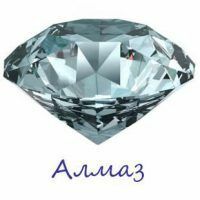
Diamond is rightly called the king of all gems. This is the stone of the chosen, the brave, the strong, the invincible. At all times it was a symbol of wealth and excellence. The rare beauty of the diamond and the unique properties of this stone have won the hearts of millions of people - from ordinary workers to royalty. Diamond was the mascot of Bonaparte Napoleon, Julius Caesar and Louis IV.
-
-
-

- Diamond properties
- Diamond and zodiac signs
- Application of the gem
- Interesting facts about the stone
- How to distinguish a natural diamond from a counterfeit
- Stone Care
- Photos of Diamond and Diamond Products
History of the Stone
The exact time of the appearance of a diamond is rather difficult to determine, with confidencebut only to say that in Europe the diamond was used already in the V-VI centuries BC, however, at that time it was not particularly appreciated.
The merits of the diamond were appreciated relatively recently, just over half a century ago. It was at this time that skilled craftsmen learned to cut a relatively unimpressive natural stone into an immaculate, brilliant diamond. The stone immediately became the favorite of Agnes Sorel( the favorites of the French King Charles VII), and this is associated with the unprecedented popularity of diamonds at that time.
In the Middle Ages, diamond jewelry was worn exclusively by royal people. The cut of the diamond was very expensive for a long time and therefore, up to the 18th century, the diamonds were not cut, but only slightly modified. As a rule, the frame for such stones was made specially closed, so that sunlight could not penetrate through it.
In Russia, the diamond was already known in 1073, however, in the jewelry, this stone was used only in 1500.
In Russia, during the reign of Catherine II, diamonds were fashioned. In the memoirs of the court jeweler, Tsarina I. Pose, it is said: "Ladies of even a relatively low rank never leave home without precious dresses, as a rule, diamonds themselves are 10-13 thousand rubles".
Until the middle of the XIX century diamonds in Russia were only imported. Most Russian masters used diamonds from India. Only in 1829 in the Middle Urals( at the Krestovozdvizhensky gold mine) were discovered deposits of diamonds.
In the second half of the XIX century, almost all of Europe was covered by a "diamond fever", which lasted for 100 years. Throughout this period, diamond reserves around the world were mercilessly devastated until the syndicate "De Beers" was formed in 1888.Since then, a new history of diamonds has begun. Throughout its existence, the syndicate has concentrated in its hands 75% of the world's diamond production.
to the table of contents ^Description of the mineral
According to scientists, the diamond received its name either from the Greek word "Adamas"( ἀδάμας), which means "indestructible", or from the Arabic word "almās" - "very firm".These names best characterize the mineral, as it has long been known that the strength and hardness of a diamond is not equal.
80% of all mined diamonds are technical diamonds and aggregates, which are characterized by milky white and gray shades. Diamonds of jewelry quality differ in yellow, smoky brown and brown flowers. The most valuable and rare are blue, pale green and mauve-purple stones.
Colorless diamonds are extremely rare. As a rule, most "colorless" diamonds have insignificant shades. The exception is the so-called "pure water" stones. These diamonds are distinguished by the absence of impurities, defects and color, although such minerals are very rare.
In addition to the diamond of "pure water", stones that have a so-called fantasy color are highly valued. Highly valued diamonds are rich in gold or wine-yellow color. Rare diamonds are blue, pink, ruby red and cherry color. It is also extremely rare to see bright purple, black and green jewelry diamonds.
to contents ^Varieties of diamond
Depending on the weight distinguish such varieties of diamonds:
- small;
- average;
- are large.
Depending on the characteristics and scope of application, these types of diamonds are distinguished:
- technical;
- jewelry.
Depending on the color, these types of diamonds are distinguished:
- yater - diamond is bluish-white;The
- river is a completely transparent diamond of bluish-white color;
- tone viscideton - less transparent diamond of pure white color;
- Visselton - a white diamond;
- top krystl - diamond with a light yellow tint;
- is a crystal with a more saturated yellow tint;
- verp light - diamond with a light brown tinge;
- Cape - yellowish diamond;
- top cap is a slightly yellowish diamond;
- light yellow - a diamond of light yellow color;
- light brown - a diamond of light brown hue;
- Yellow is a diamond of yellow color.
loading. ..
In addition to the crystals, the diamond also forms aggregates and splices.
There are three mineral types of diamond:
- Bort - is a natural technical diamond, which is used in industry as an abrasive powder. By its structure it is a cluster of small crystals. Due to low transparency, large defects and poor coloring, the bead is not suitable for cutting.
- Ballas is a technical diamond. It differs radially thin-fibrous structure, has no inclusions, has a solid outer shell. As a rule, this variety has a spherical shape and has a black or dark gray exterior color.
- Carbonado is a technical diamond, which has great value due to high abrasion resistance. This mineral is both dense and porous, and has a coke-like shape. As a rule, it has a black or gray color and has in its composition irregular grains or small cubic crystals.
Chemical composition and physical properties of the stone
The chemical composition of the diamond is crystalline carbon.
Chemical formula of diamond: C( pure carbon).
In addition to carbon, diamond crystals have some impurities. As a rule, these impurities are distributed unevenly throughout the entire plane.
It is known that the maximum amount of impurities in a diamond does not exceed 5%.Among them are:
- silicon;
- nitrogen;
- calcium;
- boron;
- magnesium;
- aluminum.
loading. ..
Less common are admixtures of iron, copper, barium.
In diamonds, solid inclusions( graphite, garnet, quartz and others), as well as liquid( carbon dioxide or water) and even gaseous inclusions( nitrogen) can occur.
Coloring of precious diamonds directly depends on the presence of inclusions, impurities, defects. Most often there are diamonds, painted in pale tones.
The hardness of the diamond is maximum and is 10 units on the Mohs scale.
The density of a diamond varies from 3.417 to 3.55 g / cm3.It is also worth noting that natural diamond does not dissolve in alkalis and acids. Interestingly, diamonds stick to some fatty mixtures. It is thanks to this feature that diamonds are extracted from the beneficiation factories.
to contents ^Diamond deposits
Diamond is a very expensive mineral, but it is fairly widespread around the globe. Deposits of diamonds are found on all continents except for Antarctica.
Now the main mineral deposits are in Russia, India, Canada, Australia, USA, South Africa, Borneo, Brazil, Angola, Guinea, Venezuela and Congo.
to contents ^The healing properties of the mineral
Like any natural stone, the diamond has unique healing properties.
Lithotherapists claim that diamond jewelry:
- reduce heat;
- relieves fatigue;
- are struggling with infections;
- activate metabolism;
- eliminates insomnia;
- protects against stomach diseases;
- is treated for sclerosis;
- helps with skin diseases;
- prevents the formation of kidney stones;
- treat schizophrenia and depression.
In the Middle Ages, diamond was used as a rejuvenating agent, since the subtle vibrations of this natural mineral not only stimulate the heart and brain activity, but also favorably affect the work of the nervous system.
to contents ^Magic properties of diamond
In ancient times, a precious diamond was used as an antidote.
This natural stone personified courage, firmness of spirit, perfection and power. Not in vain for a long time, diamond jewelry was worn exclusively by members of the royal families.
Now the diamond is more a symbol of purity of the soul and innocence. There is an opinion that a natural diamond is able to bring its owner happiness and luck in all endeavors. True, this stone is best to receive as a gift, rather than buy it yourself. In the East it is believed that if the stone was bought, then it can not be worn for seven years, otherwise the stone will bring its owner to ruin.
It is interesting that the magical properties of diamond are associated with its coloration. For example, a diamond with a green tint is considered an amulet of motherhood and a symbol of a strong family.
to contents ^Diamond and zodiac signs
Most of all, the diamond corresponds to Aries. According to astrologers, a stone can help them overcome their inner fears and feelings, and will also become a guide for them in achieving their goal.
The lion and Sagittarius diamond will protect against the evil eye and terrible diseases. At the same time, astrologers do not recommend wearing jewelry with diamond Pisces and Capricorn. Astrologers say that the stone will not only knock them off the right path, but will also cast doubt on the heart.
to contents ^Application of gem
Due to its unique properties and, above all, hardness, the mineral has found its place in jewelry, as well as in medicine, science, industry, telecommunications, etc.
- It is known that refined diamond is often used in decorating jewelry such as rings, earrings and pendants.
- Diamond is often used in both science and technology. For example, it produces ultra-thin diamond blades of scalpels, it is also used in the manufacture of laser devices.
- Thanks to the ability to conduct several different-frequency signals at once through a single cable, diamond is often used in telecommunications.
- Natural diamond is used in the manufacture of microelectronic devices.
- The unique ability of a diamond to not react to acids allows it to create special windows that help protect certain scientific experiments.
- The main use of diamond found in the industry. To date, every modern production has in its use various diamond tools: drills, cutters, grinding wheels, etc.
Interesting facts about the stone
- The average age of diamonds is about one and a half billion years.
- Diamonds are formed at a huge depth( more than 200 km).They can be extracted from the depths reachable to humans only thanks to volcanic eruptions.
- Inside the diamond, the sound propagates several times faster than in the air.
- Diamond is the record holder not only for hardness, but also for thermal conductivity.
- Diamonds burn at temperatures above 900 ° C.After such a thermal impact, there is no trace of the diamonds.
- One of the largest diamonds in the world is Cullinan weighing 3106.75 carats, which was found in South Africa. It was his find that prompted the "diamond fever" in Europe. True, the stone was divided into several parts - several Large and several Small "stars of Africa".Subsequently, the "Big Star of Africa" with a total weight of 530.2 carats became an ornament of the British royal scepter, and "Second Star of Africa" (weight 317.4 carats), is an ornament of the British crown.
- In 1909, a 30.82 carat diamond was found in one of the South African mines, which, after being cut by a French craftsman, became the famous diamond "Blue Heart".Now the decoration is on one of the diamond shows in the US.
- The largest non-faceted diamond weighs 1029 kg. This unique mineral is the Star of BPM 37093 - Lucy, which is about 50 light-years from Earth.
How to distinguish a natural diamond from a fake
Identifying a fake is quite easy.
- Look through the stone in the sun. It is known that natural stone has a high degree of refraction, which allows it to sparkle more than any other stone.
- Place the stone flat on the magazine. If you can read the printed text, most likely, you have a fake.
- Natural stone has a double refraction. Pass through the diamond a beam of light, it should split into two rays. The first beam spreads straight, while the second ray should swerve to the side.
- It is known that a natural diamond can not only scratch the glass, but even cut it.
- To check the authenticity of the stone, just hold it for a while in your hand. Like any other precious stone, the diamond should not heat up quickly.
- Diamond is not damaged even by sandpaper. If there are traces of it, there is no doubt, there is a fake in front of you.
Stone Care
- Diamond is the hardest mineral of the planet, but, in spite of this, it is best to store diamond jewelry separately from other jewelry, because this natural stone can severely scratch other things you love.
- Diamonds do not like sudden temperature changes.
- Do not use aggressive chemicals when cleaning diamonds. Apply a warm soapy solution.
- Once a year, it is necessary to carry out deep cleaning of the stone:
- First, rinse the diamond with warm water.
- Then prepare a mixture of ammonia( one part) and water( three parts), place the stone there for about an hour.
- After this, carefully clean the stone with a brush.
- At the end, rinse the diamond in clean water and polish it to maximum gloss with a dry soft cloth.
Photos of diamond and diamond products
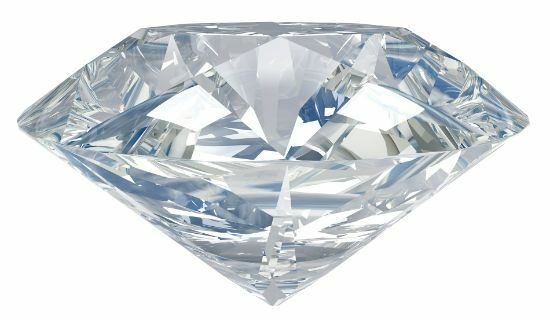
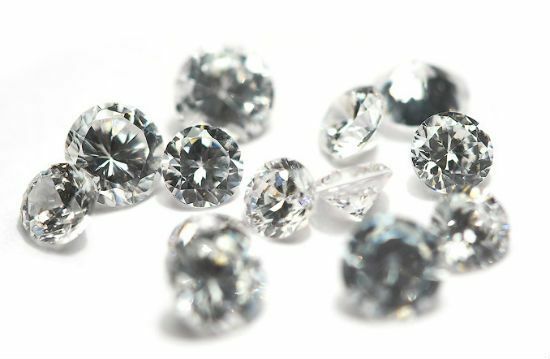
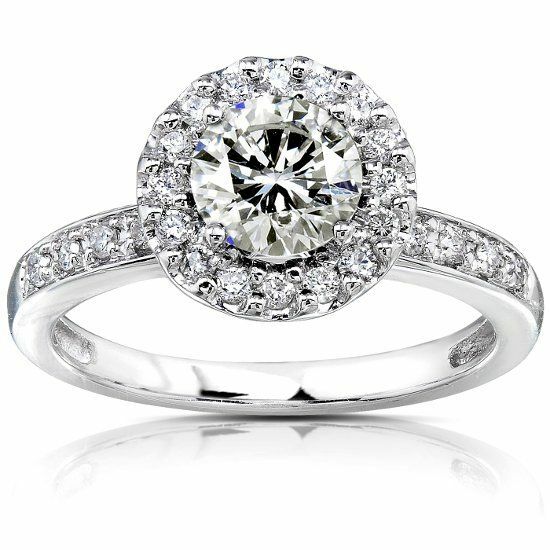
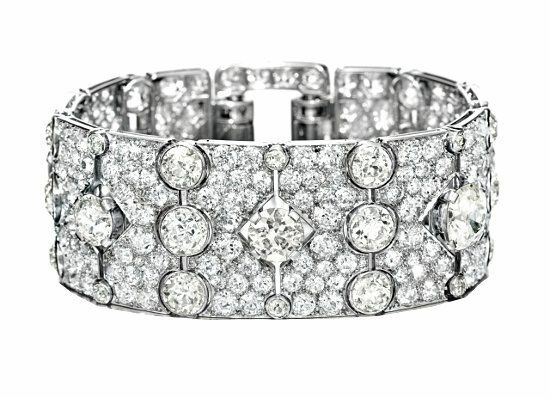
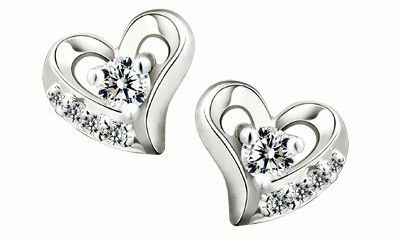
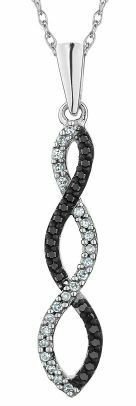
-
